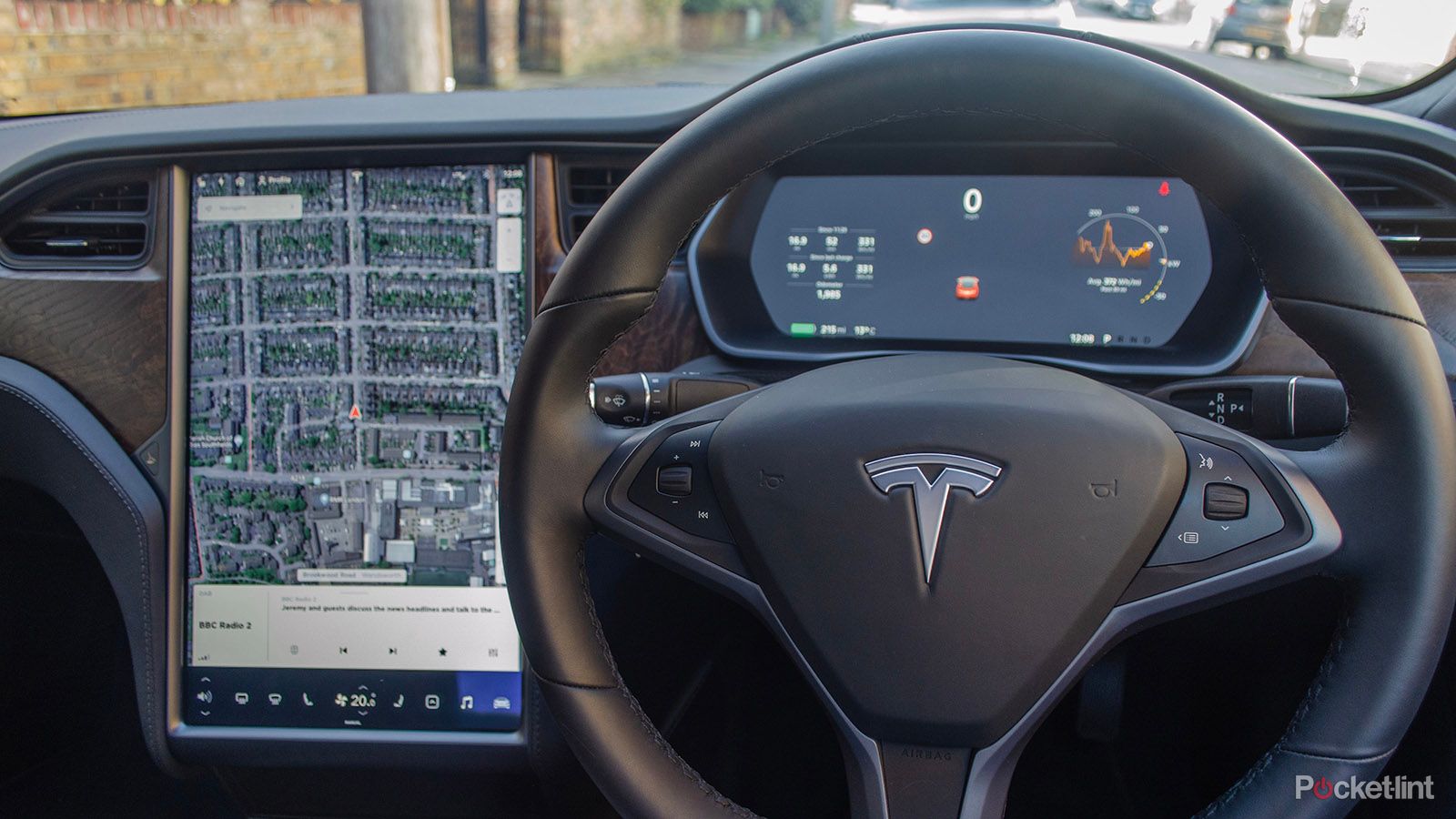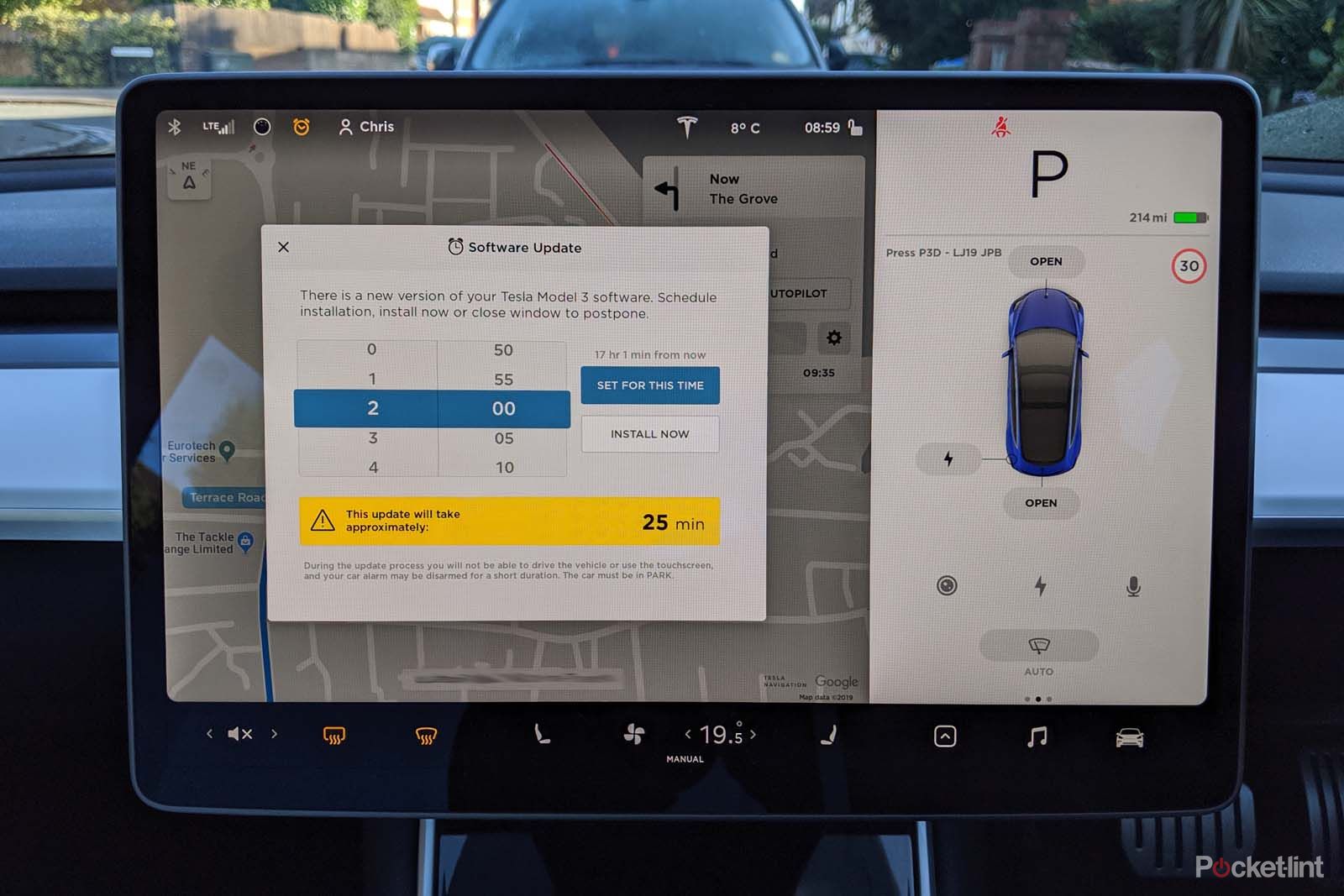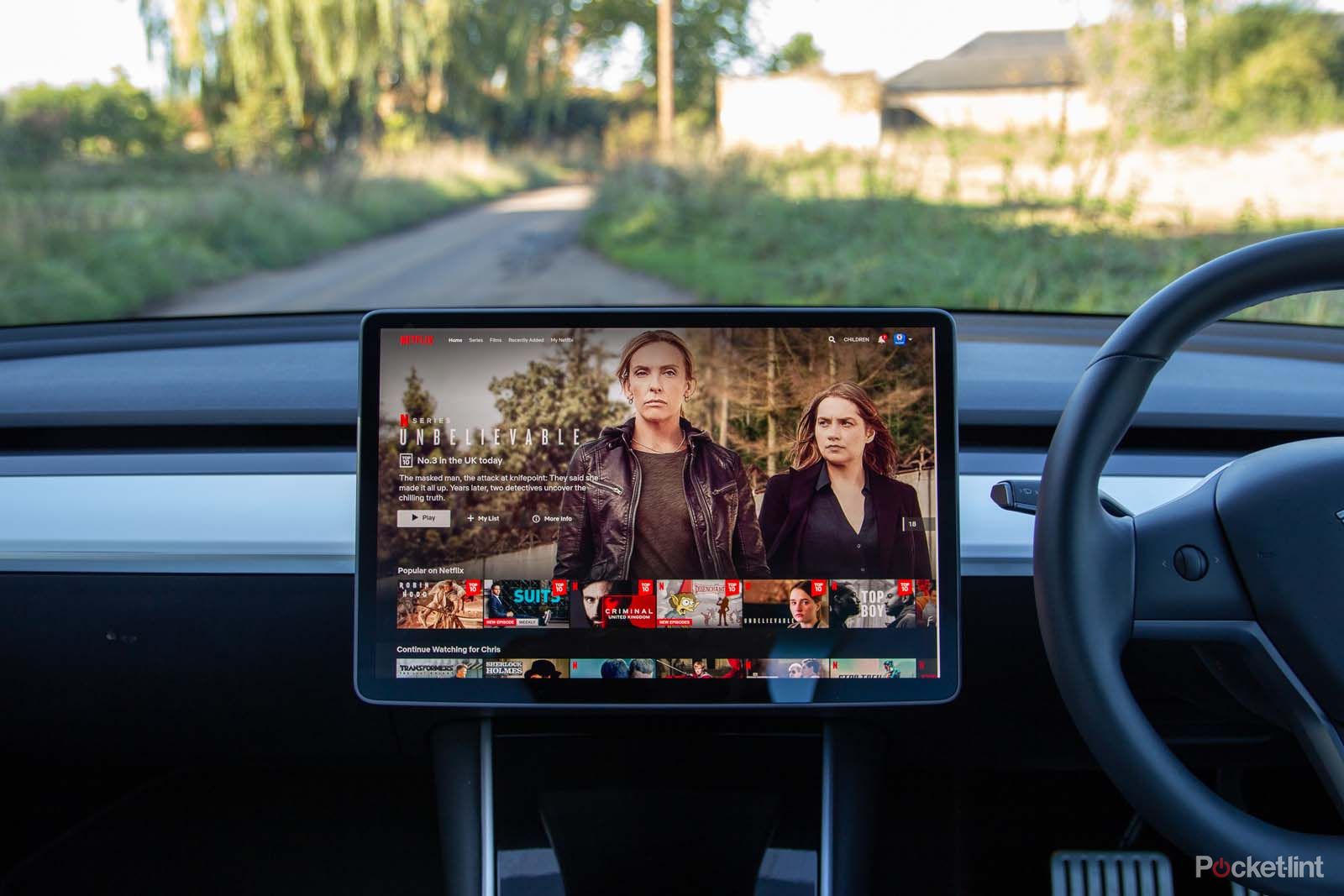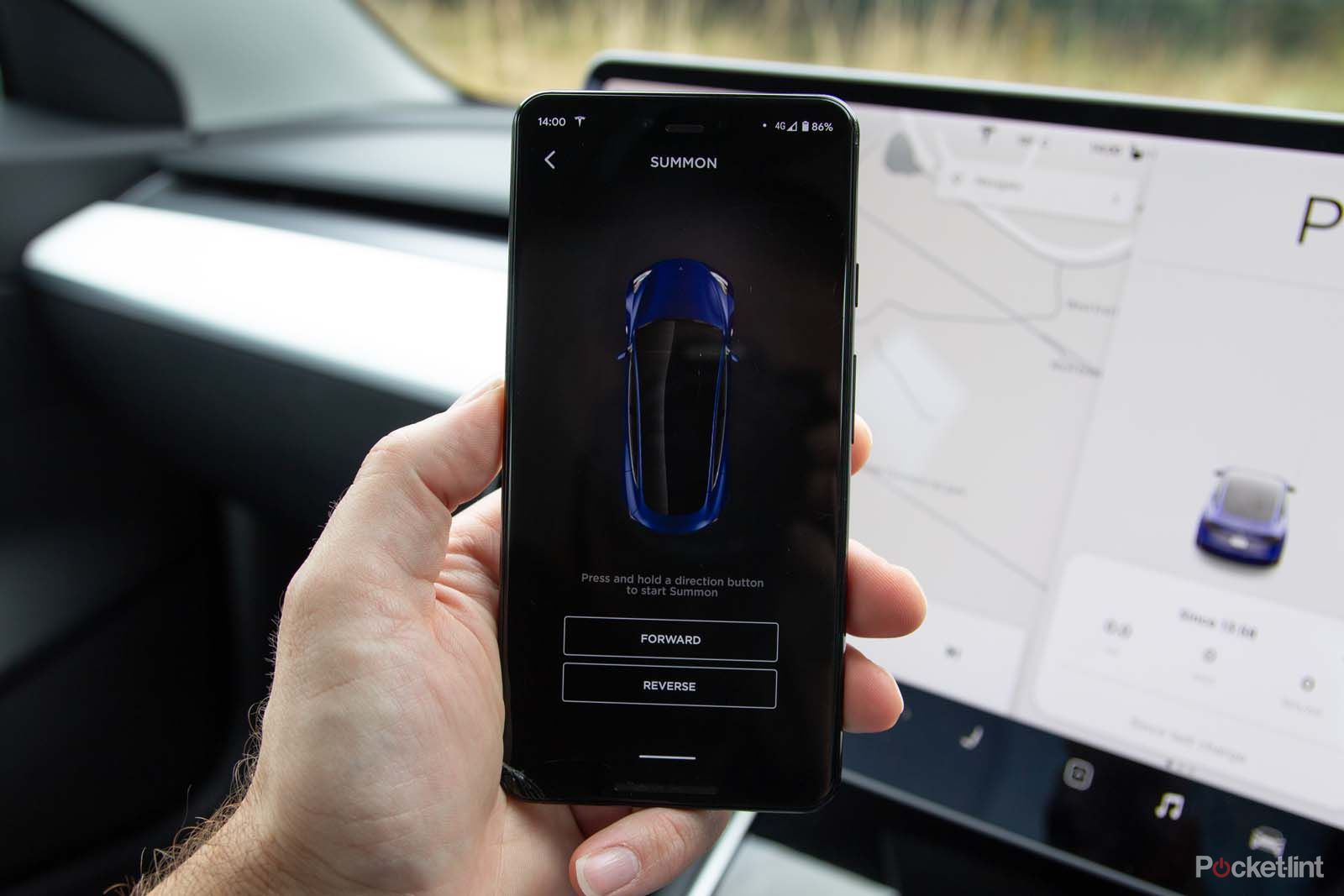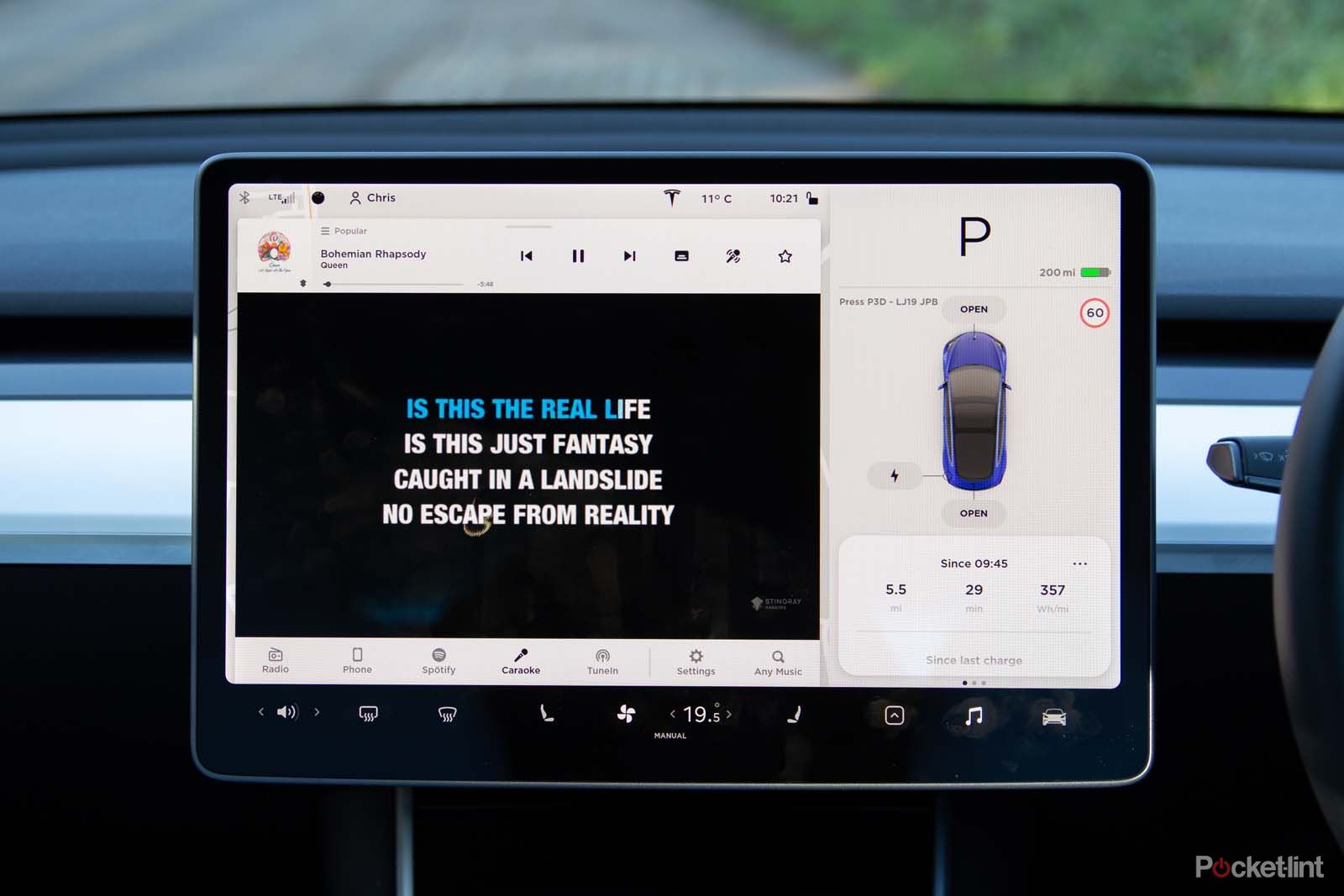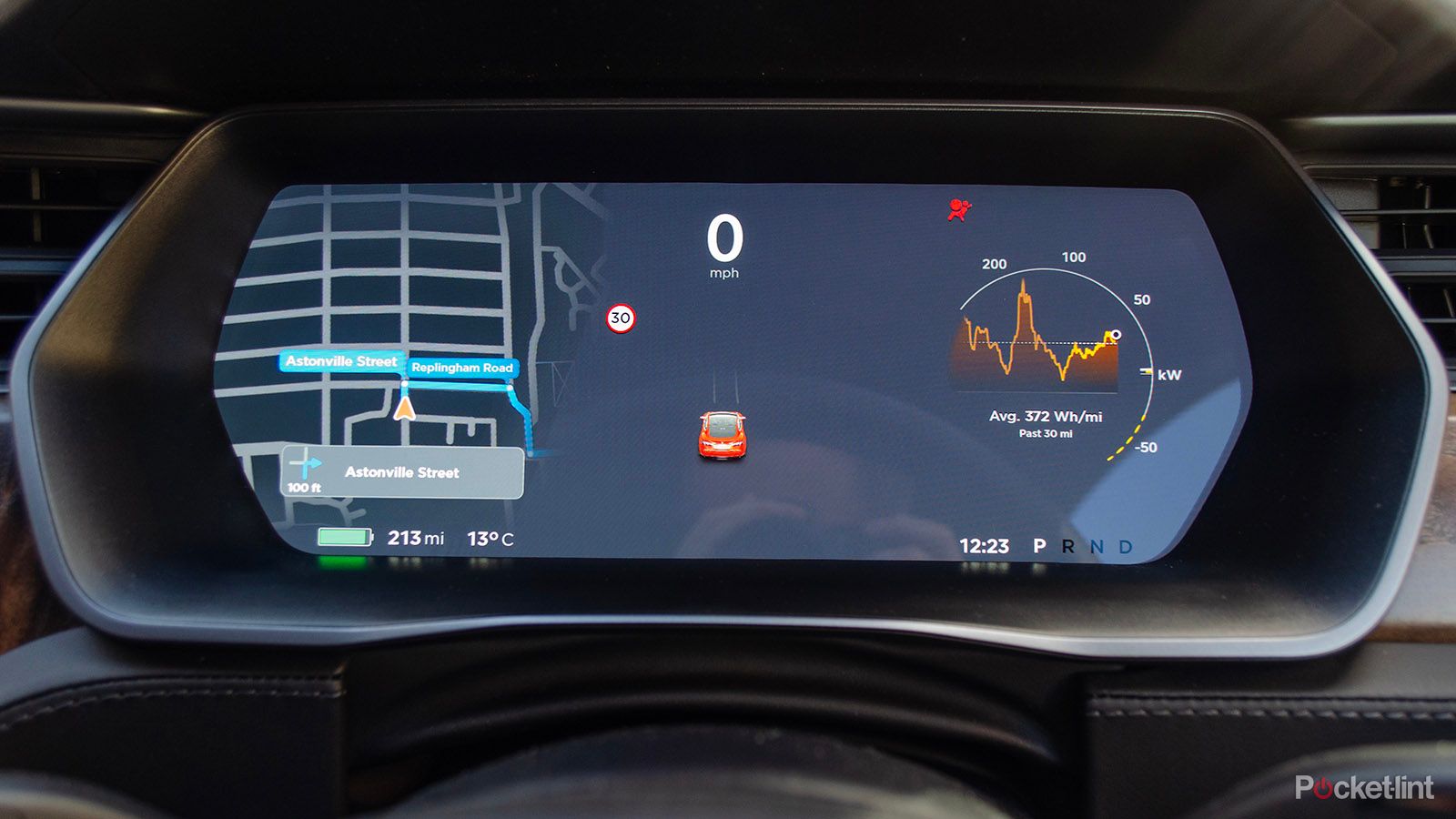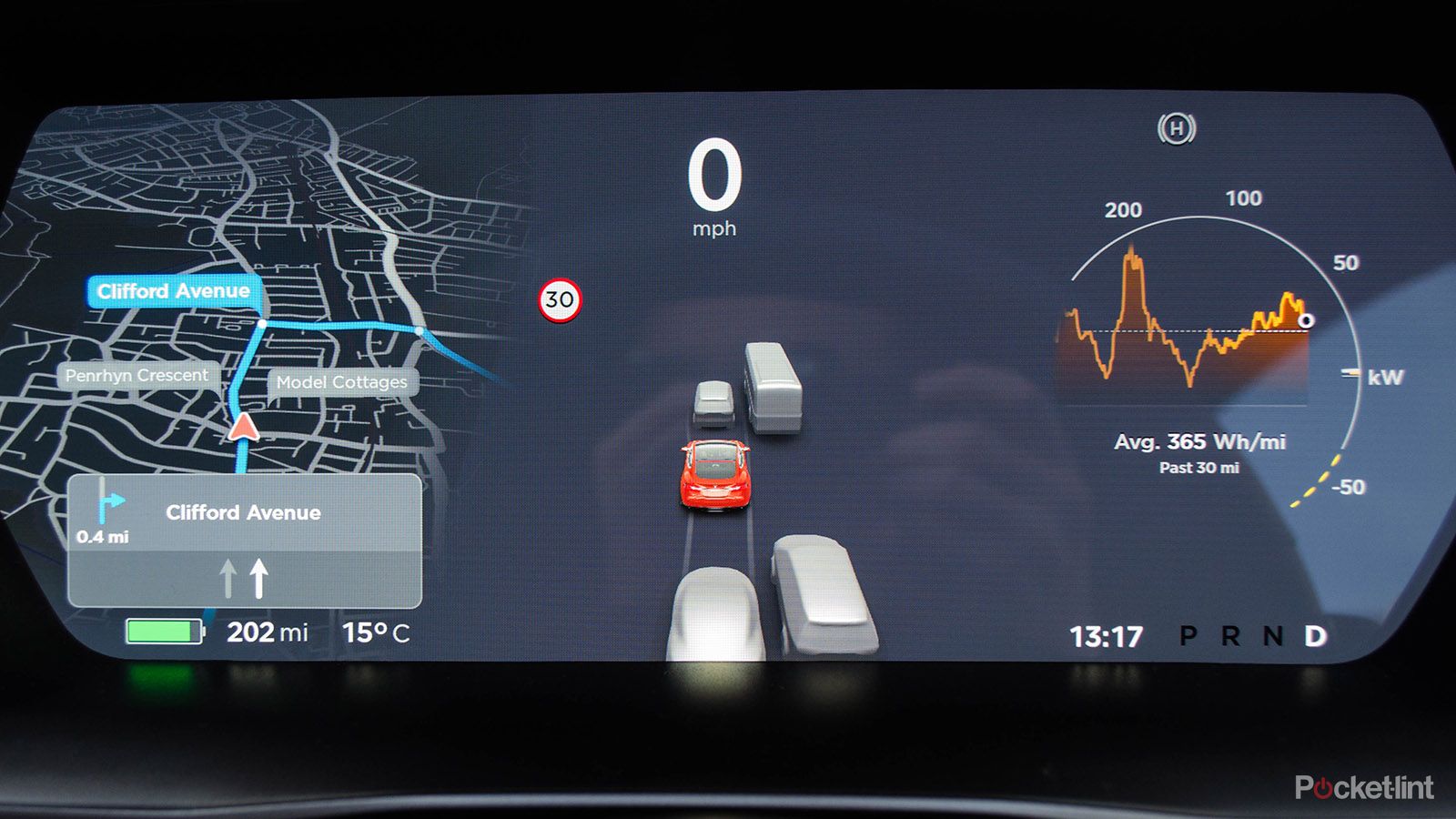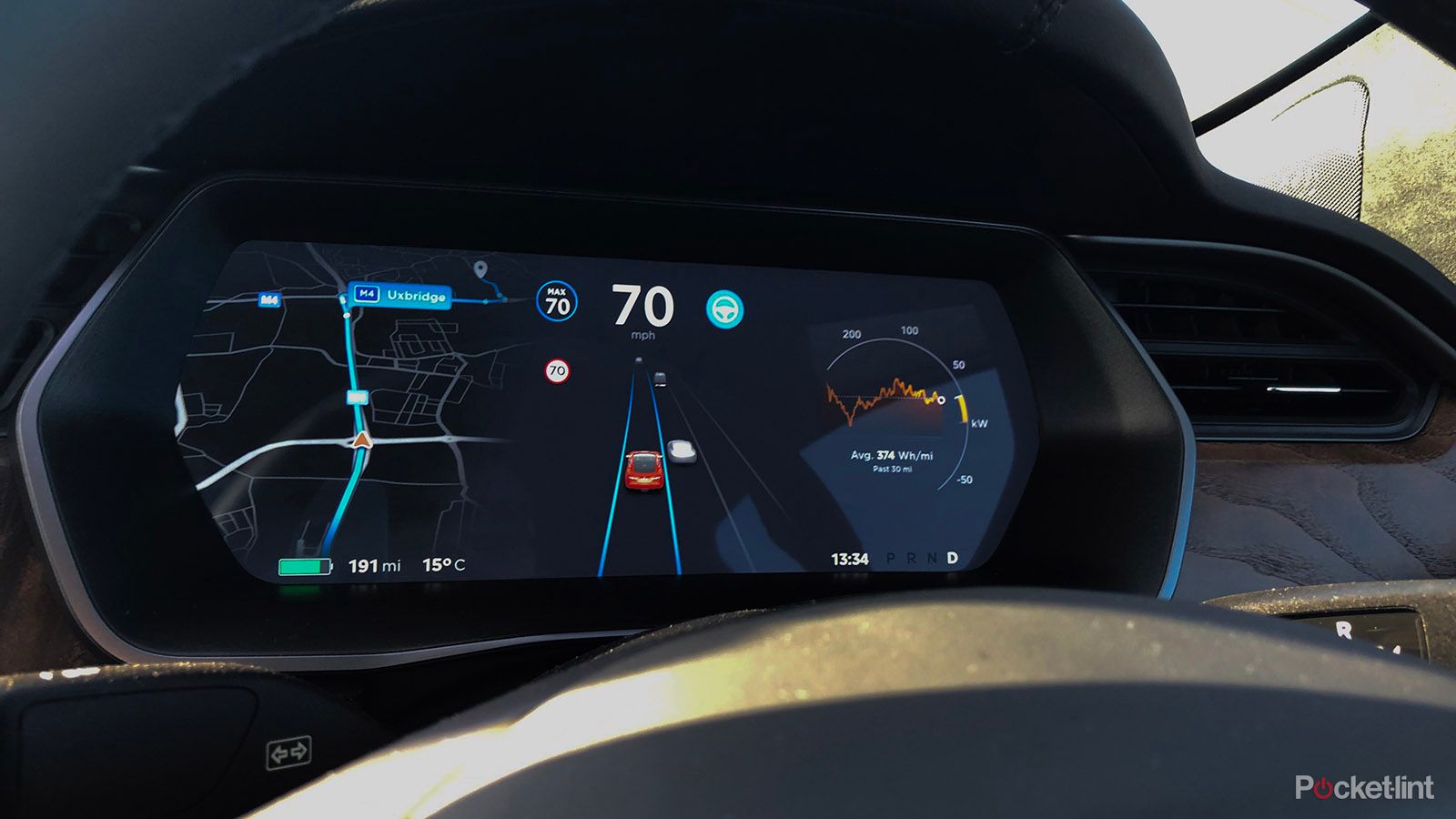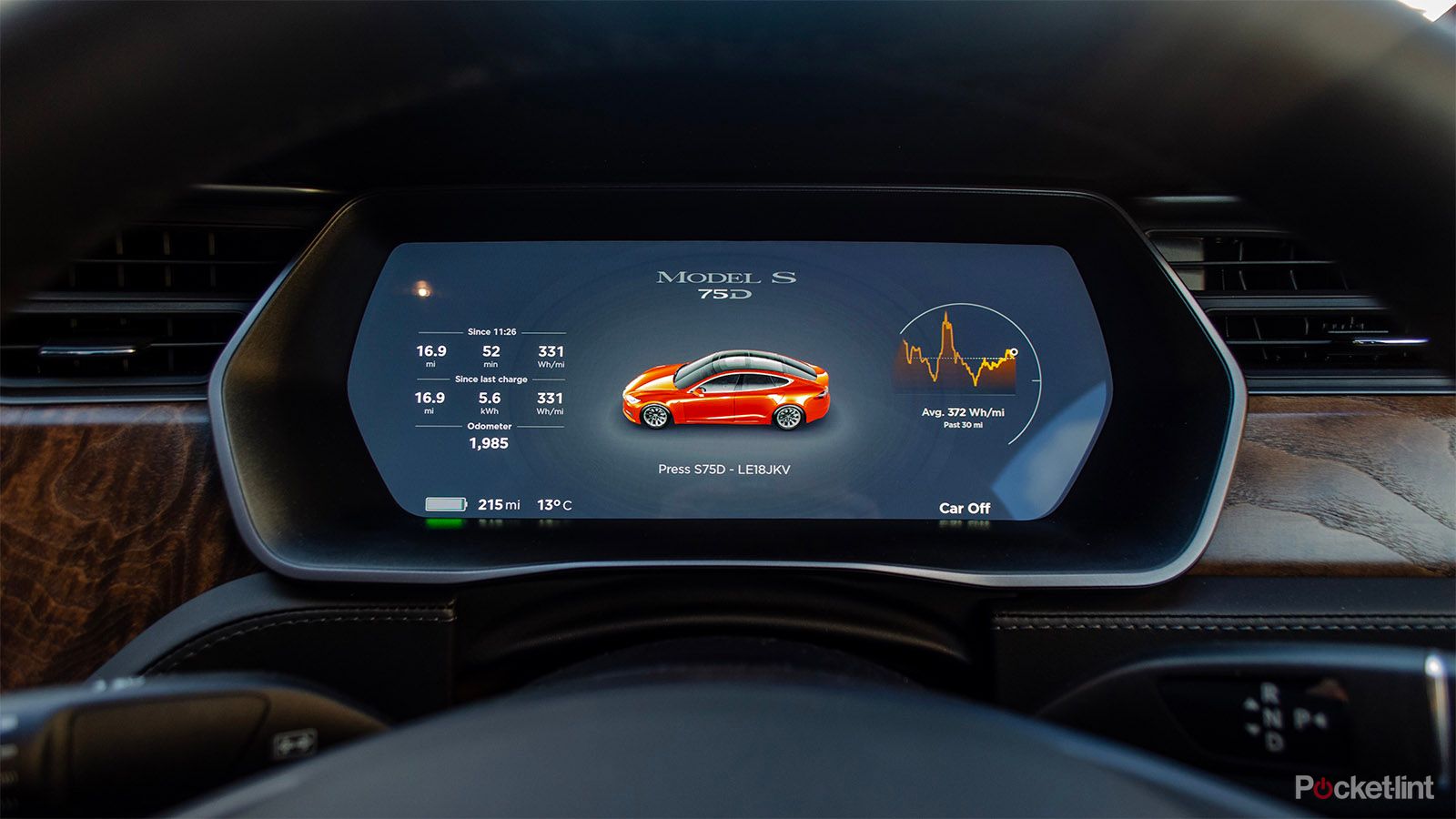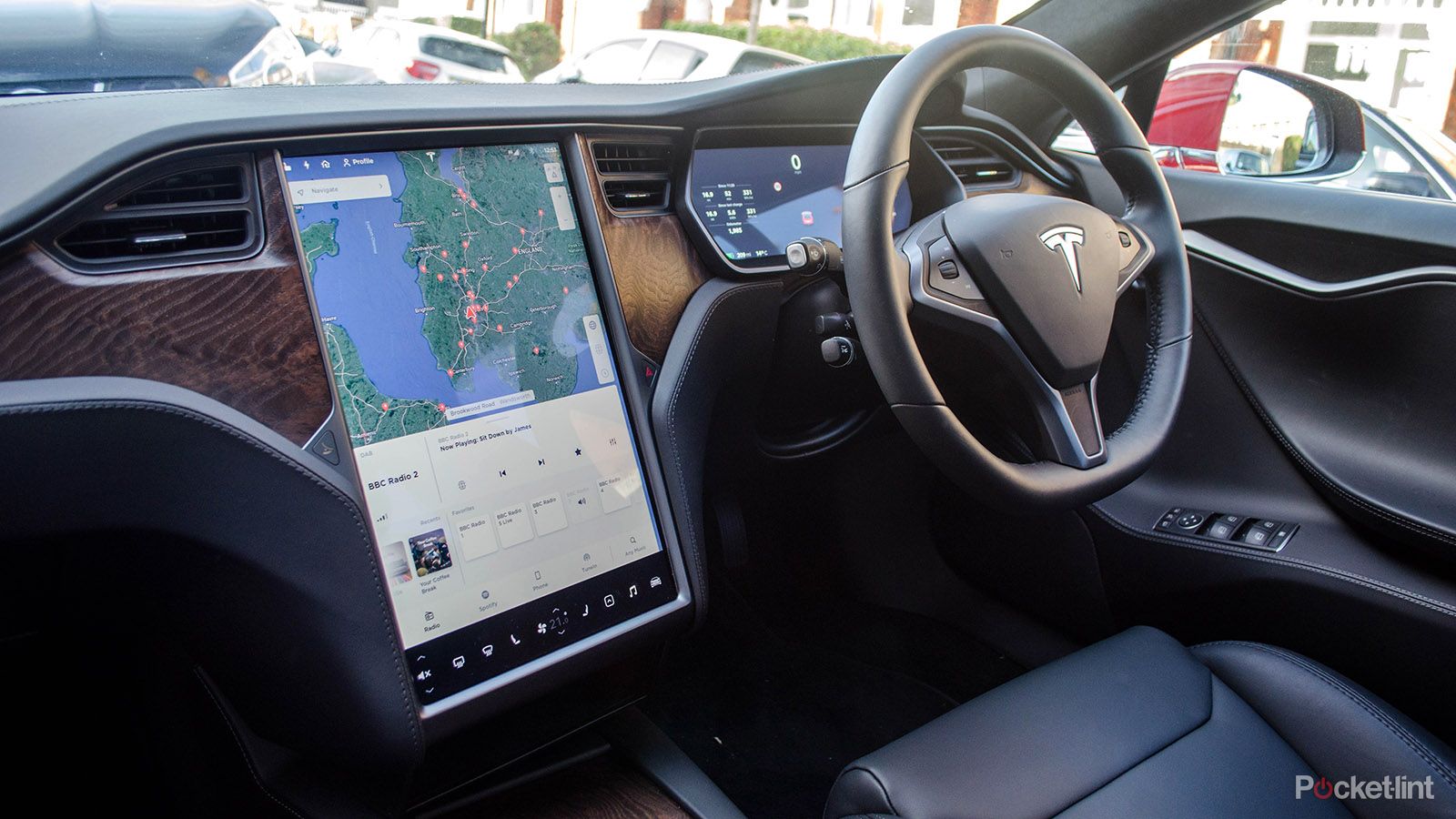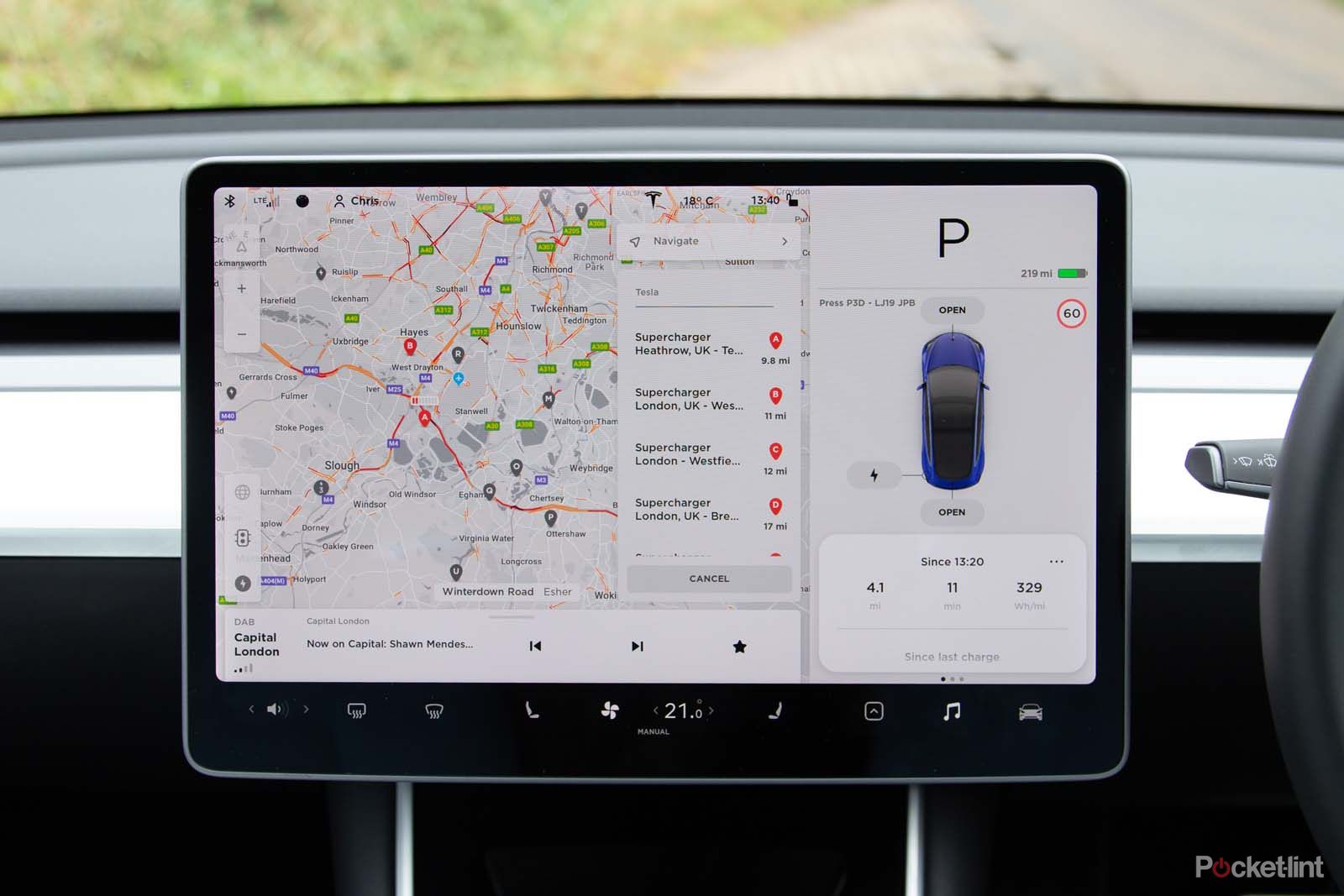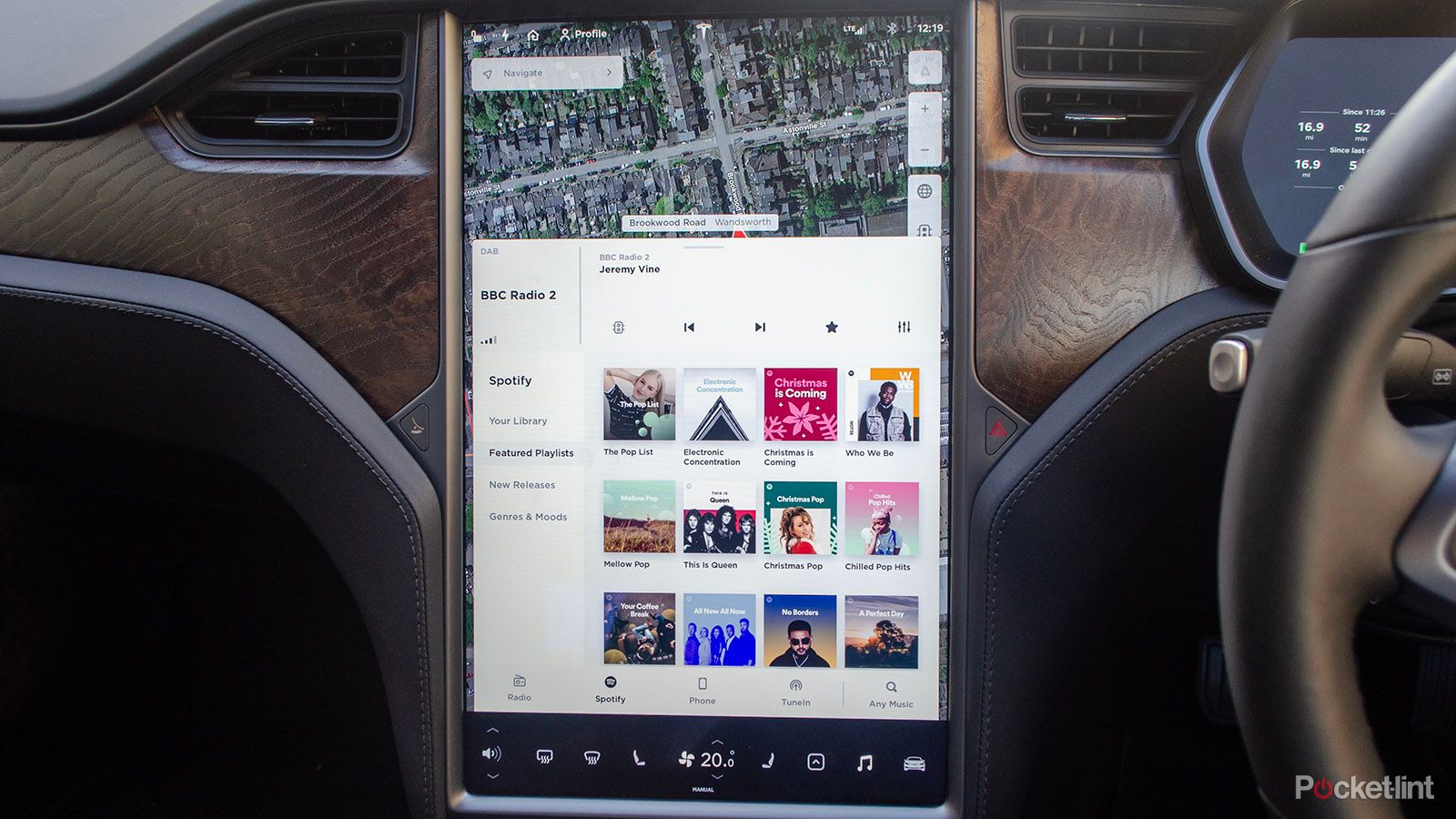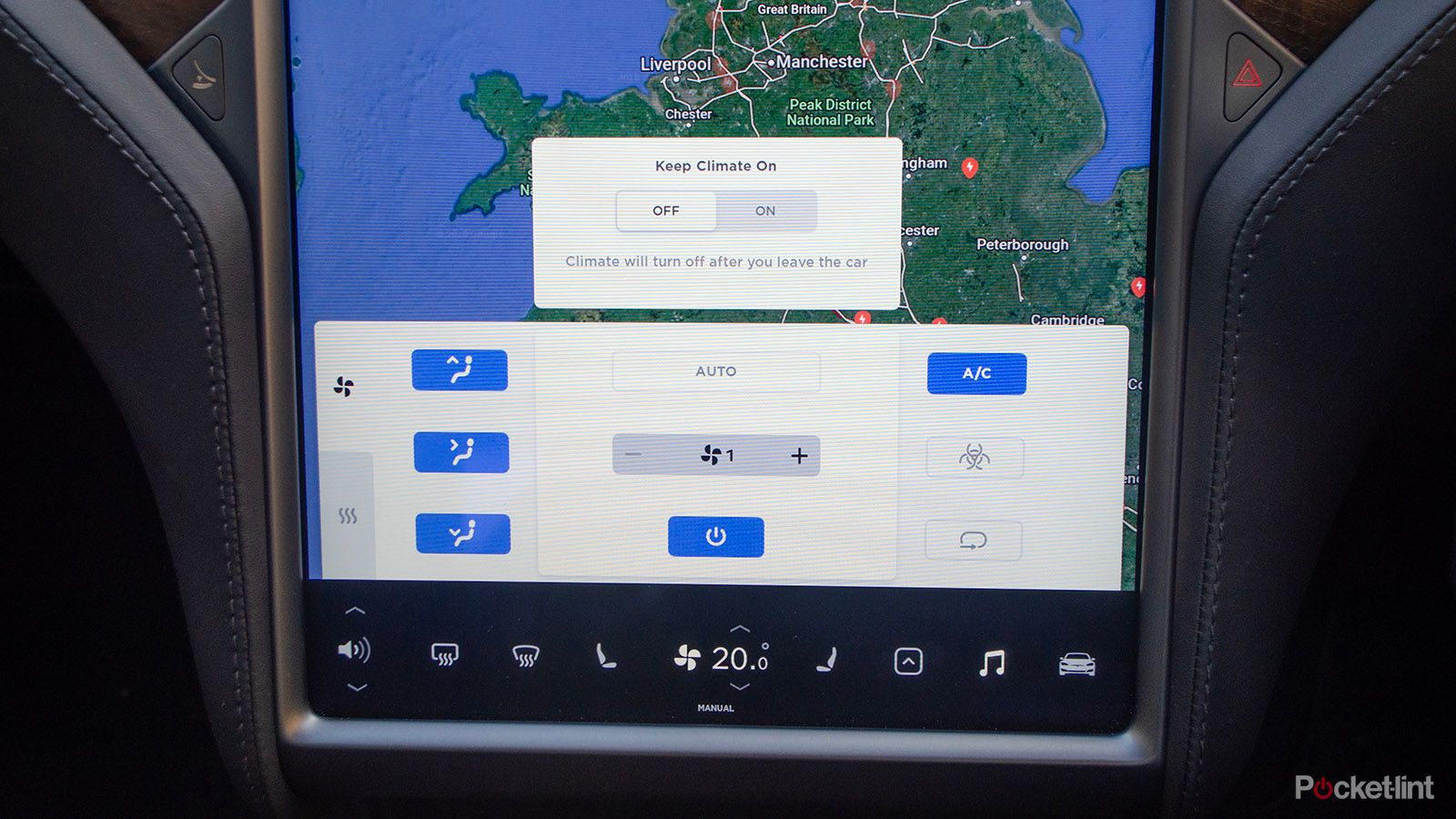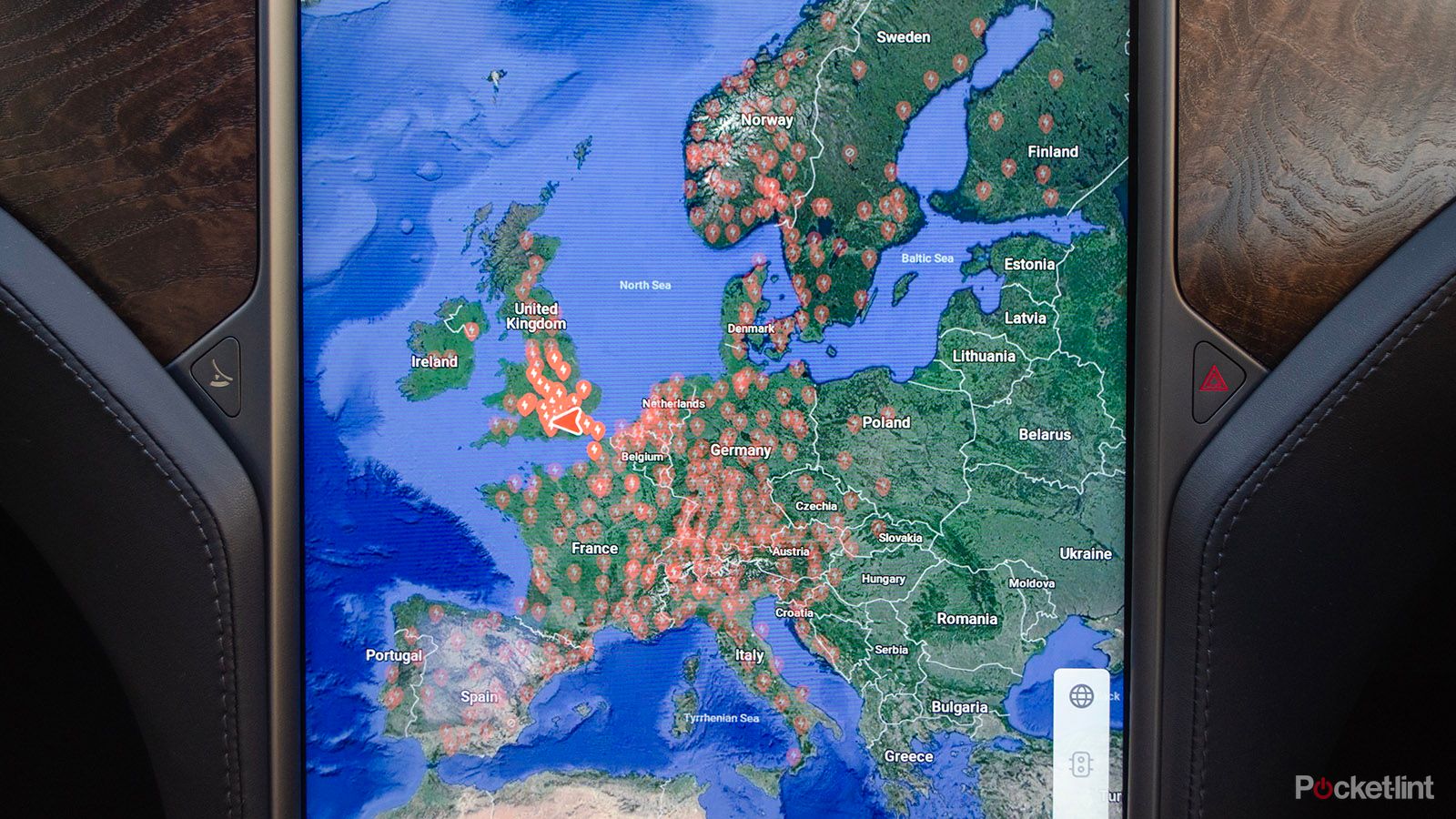Tesla is of course best known as a forerunner in the electrification of the motorcar. Under the leadership of bombastic billionaire Elon Musk, the company reimagined the car to give itself such a head start that its Model S, which went on sale in 2012, is only now facing credible rivals from the likes of the Jaguar i-Pace and Audi e-tron.
But even if we park the electric motors and battery pack to one side, Tesla remain hugely innovative cars that are packed to the roof bars with technology. There's the huge dashboard touchscreen for starters, then there's Autopilot, the smartphone app, over-the-air updates which add new features free of charge, and of course the Easter eggs – which now include classic Atari video games to keep you entertained while charging the battery.
With Tesla just rolling out Version 10.0 of its car operating system – which brings with it a slew of visual and functional changes – we've taken a deep dive into all of the tech that Tesla's cars have to offer (everything mentioned below is available on both the Model S and Model X; the same system is also used by the Model 3, but that car's horizontal dashboard display means its interface is different).
So disconnect the Supercharger, hit Ludicrous mode, and join us on our journey into Tesla's in-car tech.
Tesla Version 10.0: What's new?
To kick things off, we're going to quickly run through what's new with version 10.0 of Tesla's in-car operating system.
Firstly, future software updates released after 9.0 can be installed via the smartphone app. Before, Tesla drivers were told about new software on the dashboard touchscreen, which is where they would opt to download and install it. Now this process is handled through the iOS and Android app, so you can install new software from wherever you are. Beyond version 10, you should now get a progress notification in the app too.
Version 10 is one of the biggest updates to the Tesla operating system that we've seen so far, and while the addition of Netflix will take many of the headlines, there's a lot more on offer. Visually, much of the software remains as it did in version 9.
Here are the important areas that have been added or adapted across the Model S, X and 3.
Theatre: Netflix and YouTube
Those in the UK might recoil at the spelling, but you'll be placated when you sign-in to Netflix and start streaming the latest hot TV drama in your car. Netflix is joined by YouTube and Tesla's own videos, giving you something to watch in the car, alongside gaming and music. Naturally, you can't watch any of these video services when you're driving.
Netflix and YouTube behave exactly as they would in a browser, letting you sign-in. They also really benefit from Tesla's great sound system in the car, with clear separation between channels to make for an immersive experience. It might have sounded like a gimmick, but being able to watch Netflix while sitting at a Supercharger is great - not just for the driver, but for passengers too.
We've written a lot more about the Netflix experience in a Tesla here.
Smart Summon
Smart Summon evolves the Summon feature available through the app in v9, which would let you move the car in or out of a parking space while you're out of the car.
In version 10, there's now a more advanced feature that will actually drive the car to you as well. The idea is that you can call the car using Smart Summon and it will pull out of a space and drive over to you, rather than you having to walk over to it. Tesla stipulates that this should only be used on private property - and it's not available in the UK at all.
You'll also need a full self-driving or Autopilot Enhanced to be able to do this.
Easter eggs and games
Tesla wouldn't be Tesla without a selection of Easter eggs. There is already the surface of Mars on the navigation system, Mario Kart's Rainbow Road on the Autopilot interface, and a way to turn the car's icon on the suspension settings page into James Bond's Lotus Esprit submarine (which Musk once bought at auction for £600,000, naturally).
Version 9 added a collection of classic Atari video games, controlled via the scrolling buttons on the steering wheel. The games include Asteroids, Lunar Lander, Missile Command, and Centipede.
The new addition is CupHead, but the caveat is that you'll need a USB controller to be able to play it.
Car-aoke
New on the entertainment front is Car-aoke. You can probably guess what it is from the name... yes, it's in-car karaoke, with highlighted lyrics to a range of classic tracks.
It's worth noting that these aren't the original tracks, they're karaoke versions, so you might find that they don't all sound exactly like the originals. That probably won't matter, because once the whole car is singing along you probably won't be able to hear them anyway.
A few other bits and pieces
Doing a Google, Tesla has also added an "I'm feeling lucky" option to navigation. This will find somewhere, in range, that's interesting and you might want to visit. You simply hit the button, a location is chosen and that's that. There's also an option for "I'm feeling hungry" where you'll get directions to a nearby restaurant.
There are enhancements to Sentry Mode and the dashcam, storing files on your USB storage in different folders. Elsewhere there's a Joe Mode that will make all the system sounds quieter so they don't disturb people in the back of the car who might be sleeping.
Instrument binnacle
Now that's version 10 taken care of, we can take a broader look at how Tesla's interior technology works, what the controls are, and how well everything gels together into one complete system.
Tesla's cars do not have any physical dials behind the steering wheel (or anywhere else). Instead, the driver is presented with a 12.3-inch LCD display (with a resolution of 1280 x 480). This shows the car's position on the road, the surrounding traffic, lane markings, and speed. The local speed limit is also displayed, thanks to forward-facing cameras reading road signs.
What's displayed to the left and right of this central readout is up to the driver. They can show part of the navigation map, media controls, or a graph showing your recent electrical usage. These readouts are controlled with a pair of scroll wheels on the steering wheel. Located within easy reach of your thumbs, they scroll up and down, and can be clicked – for muting music, for example.
The right-hand scroll wheel can also be used to quickly adjust display brightness, open or close the sunroof, change the cabin temperature and fan speed, and operate your phone via the car's Bluetooth connection.
What's smart about this interface is how different types of vehicles around your car are displayed accurately. Cars, trucks and cyclists all have their own 3D icons, which move in sync with the surrounding traffic. This isn't particularly useful for the driver, but it offers a great insight into what the Tesla can see, and how far ahead it is looking.
It's worth noting that the Tesla Model 3 doesn't have an instrument panel at all - it's all shown on the central display instead.
Autopilot and cruise control
Knowing what the car can see is comforting when, with two pulls of the cruise control stalk, Autopilot is engaged. Autopilot is now standard on all Tesla models, but there's an Enhanced version that you'll need for full self-driving - and that option will cost you £5,900 at the time of writing.
Autopilot is the company's advanced driver assistant system. At a basic level it combines adaptive cruise control with lane guidance, taking care of speed, braking and steering.
Legally, it does not take over control of the car and drivers are regularly reminded to keep their hands on the steering wheel at all times. Failure to do so will trigger a set of increasingly stern warnings to take hold of the wheel. If you continue to ignore this, the car will eventually slow down, put on the hazard lights, then slow to a stop.
When Autopilot is engaged, the lane markings of the virtual readout turn blue, to indicate that the car knows where they are. If the lane markings on the road itself disappear, the Tesla will follow the vehicle ahead, adjusting its speed to keep a safe distance.
What Autopilot is capable of differs by country. In the UK, where we tested it, the system can perform lane changes on motorways and dual-carriageways, but only if you nudge the steering wheel first. To do this, flick the indicator and the car will check if it is safe to pull out; if it's not safe, the lane marker will turn red on the display. Once safe, you can nudge the wheel and the car will complete the lane change for you, slotting itself into the next lane.
In the US the system will actively suggest overtakes, and even take the exit slip road, then navigate the flyover and merge onto the next highway. This is enabled with Navigate on Autopilot - in the UK while you don't get all those things, it will make suggestions about lane changes for you, but you then have to make those lane changes as detailed above.
We generally feel comfortable with how Autopilot works. We rarely find ourselves reaching for the brake pedal, and even in busy stop-start traffic we're always confident that the car will do the right thing, smoothly and predictably. You can also enable the speed controls (adaptive cruise control) without the steering if you choose.
However, Autopilot will occasionally disengage. The system does so with no real warning, other than two beeps to signal you are now back in control. We recently had the car (running version 9.0) do this mid-way through a lane change. Autopilot started the manoeuvre, but disengaged while straddling the lane marker for no obvious reason.
In short, Autopilot mostly works well, but you are still required to concentrate the entire time, albeit in a slightly different way to when driving normally. It's more a case of keeping a close eye on the system's performance, rather than actively driving the car yourself.
Touchscreen
Look towards the centre of any Tesla and you'll be immediately drawn to the huge display. On the Model S and X this is a portrait 17-inch touchscreen with a resolution of 1920 x 1200. It looks and performs with the speed and slickness of an iPad Pro, responding to touch (and multi-touch) inputs in a way most other car infotainment systems struggle to match.
On the Model 3 there is a 15.4-inch display mounted in landscape rather than portrait, but it's just as responsive as the S and X.
This screen's most prominent use is for navigation, where satellite imagery from Google Maps gives a wonderful view of your route, complete with live traffic data and every Tesla Supercharger location clearly marked. Tapping on these reveals the number of chargers, how many are currently available, the cost of using them, and any specific instructions like the need to operate a barrier to gain access.
The location of Superchargers is spot-on, helping you find your way to plugs which are often located in distant corners of motorway service station car parks. Occasionally, such as at Woodall services on the southbound M1, the Superchargers are tricky to locate at night. Woodall's are located next to the staff car park, in a mostly unlit corner and just a few yards from where the service station exit road rejoins the motorway.
The rest of Tesla's navigation system works incredibly well. After entering an address, you are given the route, but also instructions on where to recharge and for exactly how long. We really like how seamlessly charge times are factored into the estimated time of arrival – a stat which, having driven from London to the Scottish Highlands, we know to be very accurate.
The lower part of the touchscreen is where you find controls for the climate, heated seats and steering wheel, heated windscreens, media volume, and a shortcut to the rest of the car's settings. This panel is permanently displayed and after a few hundred miles can be operated mostly without looking too closely.
Replacing physical controls with touch is a contentious subject in the motoring industry, given how screens cannot – without a good dollop of muscle memory – be operated without taking your eyes off the road. Tesla has gone all-in in this regard, and while the steering wheel offers basic climate and media controls, we don't feel particularly unsafe when operating the touchscreen's simpler features. It just takes some getting used to.
Music services
Tesla cars all come with DAB radio and Spotify via a 4G connection.
The system is easy to use and from version 9.0 software onwards the media player can be one of three different sizes. It can take up two-thirds of the screen, with the map at the top; use around half of the screen; or shrink into a compact horizontal bar above the permanent controls.
This modularity means you can have three apps open at once – say, the navigation map, rear-view camera, and media player – although we're not quite sure why you'd need all this in sight at once.
Tesla recently began including its premium £2,100 sound system as standard on all Model S and Model X cars. It's a thoroughly good system and produced by S1nn, a part of Harman, although there is no branding at all. The system has a combined 560W of power, split between five five 40W midrange speakers, two 20W tweeters, two 80W subwoofers in the front, one 80W woofer in the boot, and two 40W surround speakers in the back.
Climate control
The Tesla climate control system can be left in automatic, or the temperature, direction and speed the airflow can be adjusted manually with a tap of the touchscreen.
There's also Tesla's 'Biohazard Defence Mode', which ups airflow, pressurises the cabin, and uses a 'hospital-grade' HEPA filter to help clean the air before it reaches your lungs - although this isn't available on the Model 3.
A neat trick of the climate system is how it can be left switched on when you leave the vehicle, or automatically switch on when the cabin gets too warm. This could potentially be used to make sure your dog doesn't over heat, but it's probably safer not to leave your dog in the car.
Other applications accessed via the touchscreen include a basic web browser (video playback is disabled), the rear view camera, a calendar, your phone, and graphs charting your recent electricity usage.
PIN-to-drive
Teslas offers keyless entry and go, where just having the key fob in your pocket is enough to unlock the car – then just press the brake pedal to and away you go.
This is convenient, but also leaves the car open to the so-called relay attack, where thieves can repeat the radio signal coming from the car's fob (often left close to the owner's front door), then unlock the car and drive away. Other vehicles with keyless go are also susceptible to this attack.
To help prevent this happening, version 9.0 added PIN-to-drive, where you need to enter a PIN on the touchscreen before the car can be driven. Alternatively, you can disable passive entry so the key fob needs pressing to open the car, then pressing twice more once inside to switch it on.
The Model 3 does away with the key completely, instead giving you a card to open the door - but it's really designed to be opened with your phone. Once you're signed into the smartphone app, you can enable that as a key instead.
Ports, connectivity and smartphone app
The Tesla Model S has a pair of USB ports beneath the central armrest in the front, and two more at the back of this central unit, for the rear seat passengers. A phone can be connected to the car via Bluetooth, for music playback and phone calls, and the car can be connected to your home Wi-Fi network to download software updates.
The car's permanent 4G connection can be used to remotely control the climate control via the iOS and Android smartphone app. This app can also be used to flash the lights and beep the horn (handy when you forget where you've parked), to monitor the speed and location of the car when someone else is driving, and to keep an eye on the charging speed and battery percentage while using a charger.
This last of those features is particularly useful when at a motorway services, as the app will notify you when the battery has filled by enough to make it to your destination, or the next Supercharger stop.
Finally, the app can be used with Summon, which lets you move the car slowly backwards and forwards with no-one inside. Naturally this can only be done on private land, but could be useful for getting the Tesla out of a narrow garage.
Anything missing?
Actually yes. Tesla cars are packed full of technology, but they miss out on some of the luxuries which have almost become standard on other vehicles at this price range (the Model 3 starts at £38,800 and the Model X runs all the way up to £144,850 with optional extras).
Items entirely missing from Tesla's line-up includes Apple CarPlay and Android Auto, a heads-up display (HUD), multi-coloured interior mood lighting, massage seats, cooled seats, screens for rear passengers, a drinks cooler, climate controls for rear seat passengers, reclining rear seats, and interior perfume.
Yes, the inspiration for most of that list comes from German luxury limos like the BMW 7 Series and Audi A8, but these are the kind of vehicles the Tesla Model S is up against – and the Model X can be compared to SUVs like the Audi Q7 and Range Rover Velar. The Tesla Model 3, priced more affordably actually offers you a lot more, because it has most of the tech of the Model S and X.
Tesla can match or outperform these rivals when it comes to interior space and performance (in Performance guise it's pretty much the quickest-accelerating car on the planet). But Tesla has little in the way of optional extras. This is the price a startup carmaker like Tesla must pay when it wishes to lure buyers away from the century-old German and British rivals.
Conclusion
As you can clearly see by the length of this article, Tesla has a lot of technology. The company may miss out on many of the toys of the German rivals, but being electric, new and simply different, Tesla mostly gets away with it.
Six years after the Model S arrived, the huge touchscreen still feels cutting edge – largely due to the regular updates, like the latest version 10 software.
Being electric, there is no need for any conventional dials; so instead of pandering to what drivers are used to and making the instrument cluster look like every other, Tesla offers something new and different but which is still simple and intuitive.
Autopilot is a smart and easy-to-use system which will only improve with time. However, we feel the user interface – the display, messages and the noises it makes – could be clearer. The two 'bongs' to say Autopilot is engaged sound very similar to the two which sound when Autopilot hands the steering back to you; we feel this critical alert requires more distinction.
The navigation system is excellent, the media player is simple to use, and the companion smartphone app is genuinely useful on a daily basis for heating or cooling the cabin and checking the battery.
Make no mistake, stepping into a Tesla for the first time is a daunting experience. There is a lot to take in, and much of it will look and feel very different to what you are used to driving. That said, once you get your bearings, it's a logical system – and because electric cars are so simple to drive, your brain can allocate some extra capacity to figuring out Autopilot, and how to adjust the climate control.
As Audi, Jaguar and others make the shift from knobs and dials to touchscreens – and hydrocarbons to electrons – driving a Tesla doesn't feel quite as special as it once did. Fewer passengers gawp at the 17-inch touchscreen and say it reminds them of a space ship and, once deemed as near-witchcraft, Autopilot now finds itself in the same league as assistance systems from Audi, BMW, Nissan, Mercedes, Volvo and others.
Tesla isn't going backwards, of course, but the competition is certainly catching up.

